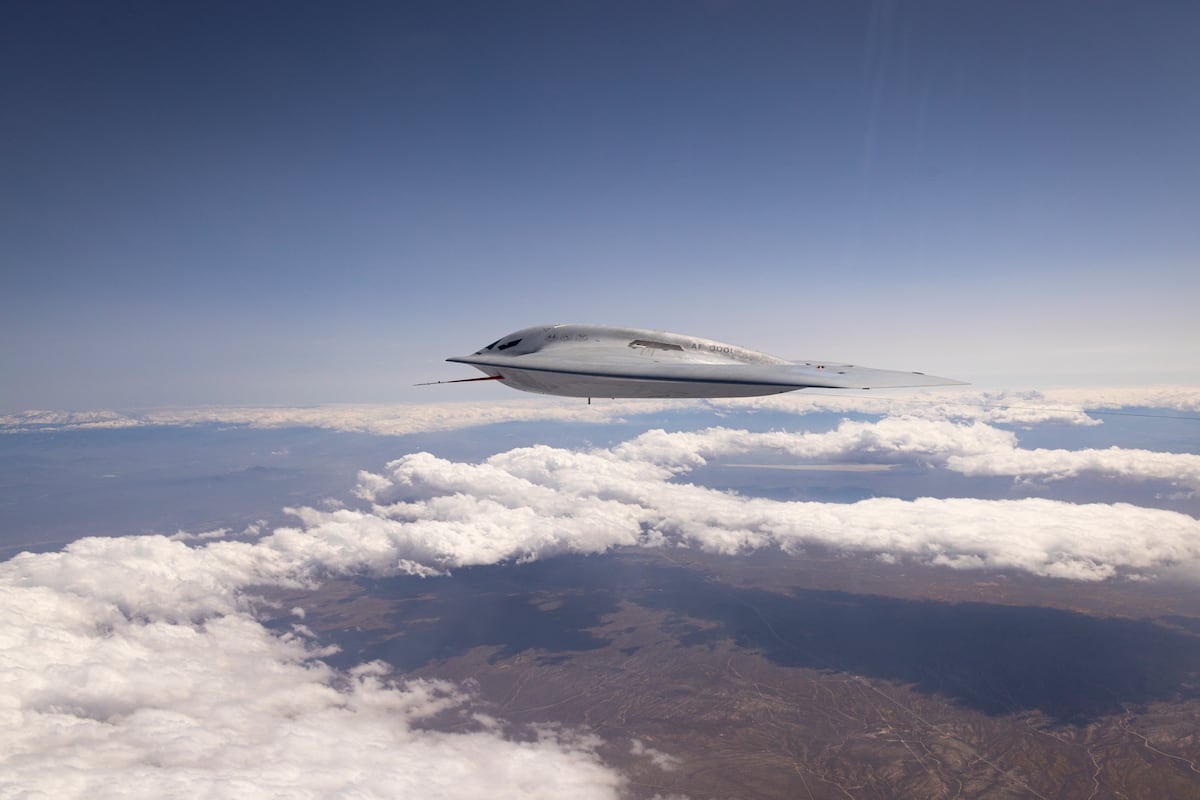Aerial combat has evolved from dogfights between high-speed, maneuverable fighters to duels among missile-armed aircraft at long range. In 2015, John Stillion presciently analyzed this transformation. His research demonstrated that victory no longer results from the fastest, most maneuverable fighter destroying an enemy in a dogfight. Instead, air combat today favors larger, less detectable aircraft using networked information to defeat adversaries with long-range missiles. This shift has ushered in a new regime of aerial combat where future air superiority aircraft may resemble bombers more than fighters. The Chinese J-36, J-50 and the multinational GCAP aircraft appear to embody Stillion’s principles. The extent to which the Air Force’s F-47 and the Navy’s F/A-XX embody these design principles remains unclear.
Current U.S. Air Force efforts to achieve air superiority against the People’s Liberation Army Air Force (PLAAF) reflect the assumption that aircraft with traditional fighter characteristics — high maneuverability, high speed and small size — will remain the centerpiece of air combat. These include increasing the number of missiles each F-35 can carry, buying F-15EXs, developing unmanned Collaborative Combat Aircraft (CCA) and fielding the F-47 Next Generation Air Dominance aircraft. These efforts are in tension with the changing character of modern aerial combat and magnify the challenge to keep pace with the PLAAF. Fielding survivable bomber-sized aircraft for long-range aerial combat could mitigate these shortfalls.
From the earliest days of air-to-air combat, “seeing first and shooting first” has delivered victory. Whereas aircraft maneuverability and speed were long fundamental to these goals, this is no longer the case. Long-range sensing and extended-range missiles have profoundly altered air-to-air combat. When an information advantage is paired with a weapon kinematic advantage, it allows one aircraft to see first and shoot first. Today, aircraft survivability depends upon reducing signatures to foil long-range detection, tracking, identification and engagement. Speed and maneuverability still matter, but these traits now reside in weapons more than aircraft.
Increasingly, aerial combat favors larger aircraft that can carry a greater number of long-range missiles and other payloads over vast distances. A historical example illustrates this trend. Over the past 33 years, the Air Force has averaged a .46 probability of kill for each beyond-visual-range AIM-120 missile fired. These engagements occurred in benign electromagnetic environments. Against the PLAAF, U.S. aircraft would face sophisticated electronic countermeasures, further decreasing each missile’s probability of kill and increasing the number of weapons required to destroy a single target. An aircraft’s ability to carry a large number of missiles is imperative in contemporary air warfare.
Fighters are traditionally small aircraft, which limits the number and size of missiles they can carry. Further, a fighter’s small weapons bays constrain missile length and diameter, and thus the range of an attack. These factors leave the Air Force’s traditional fighter inventory poorly positioned to capitalize on the critical role that aircraft size plays in contemporary aerial combat.
What options exist for increasing the Air Force’s aerial firepower in the face of these challenges? One is to field more fighters. Another is to increase the number of missiles per fighter. A third is to fly more fighter sorties.
These approaches appear less attractive when viewed in detail. Although buying more fighters, including CCA, could help, the range and payload constraints inherent in small aircraft limit this option’s effectiveness. Crucially, the People’s Liberation Army’s threat to airfields and supporting aircraft, combined with the vast distances in the Pacific theater, may make significantly increasing the number of fighter sorties impossible.
Instead, the Air Force should consider nonfighter options for meeting the challenges of contemporary air combat. If the Pentagon moves to embrace Stillion’s vision of aerial combat, the size of “fighters” should increase, perhaps to the size of today’s bombers. For example, still in testing, the B-21 Raider appears to possess the survivability and payload required to excel in contemporary aerial combat. Although the aircraft’s range and payload remain classified, it is safe to say that they exceed those of today’s fighters. Although designed and designated as a bomber, it can more usefully be thought of as a stealthy, networked, long-range aircraft capable of employing a considerable payload of large weapons.
The PLAAF presents a resolute challenge to the Air Force. Compounding that threat is air warfare’s evolving character, which favors reduced signature and magazine depth over speed and maneuverability. Moreover, the Chinese and other air forces appear to have come to this conclusion and are fielding aircraft that embody these design principles. The United States would do well to pay attention. Fielding larger, survivable aircraft for long-range air-to-air combat would take advantage of aerial combat’s transforming character. The Air Force has a rich history of setting new airpower precedents. Now is the time to break paradigms, set new standards for air superiority and strike fear in the Chinese air force.
Gregory Malandrino is a senior fellow at the Center for Strategic and Budgetary Assessments. Thomas G. Mahnken is CSBA’s president and chief executive officer.
Read the full article here





